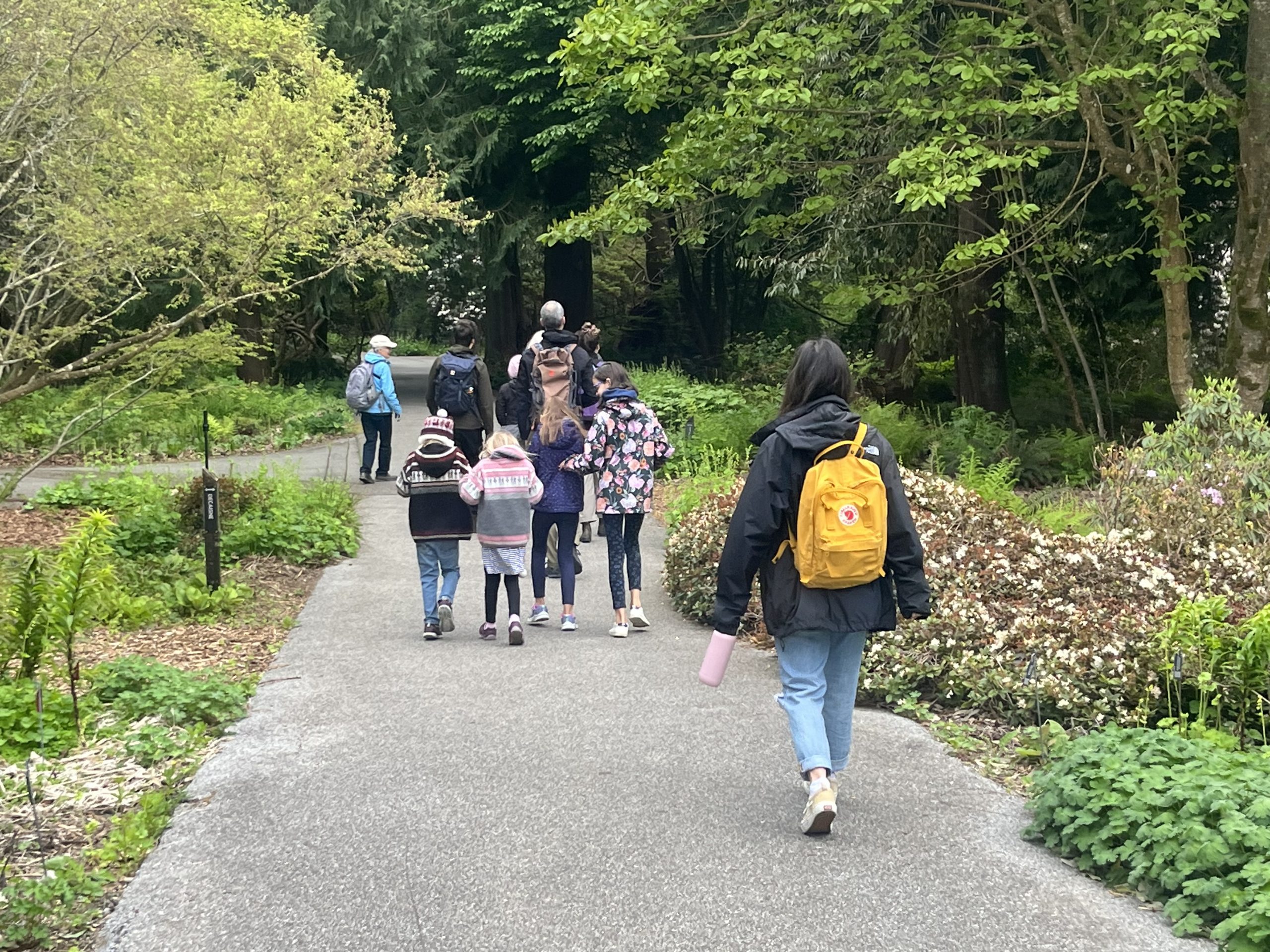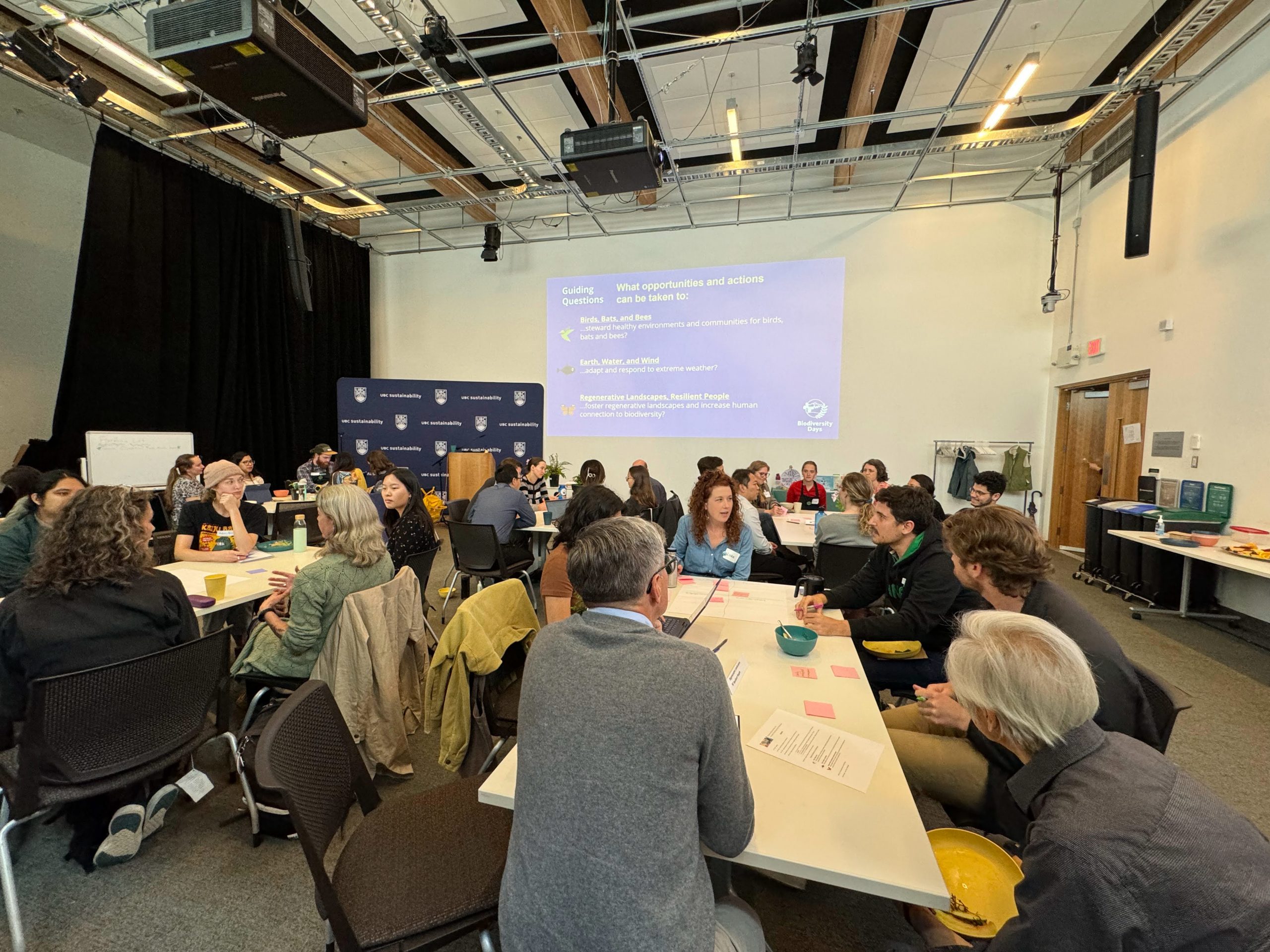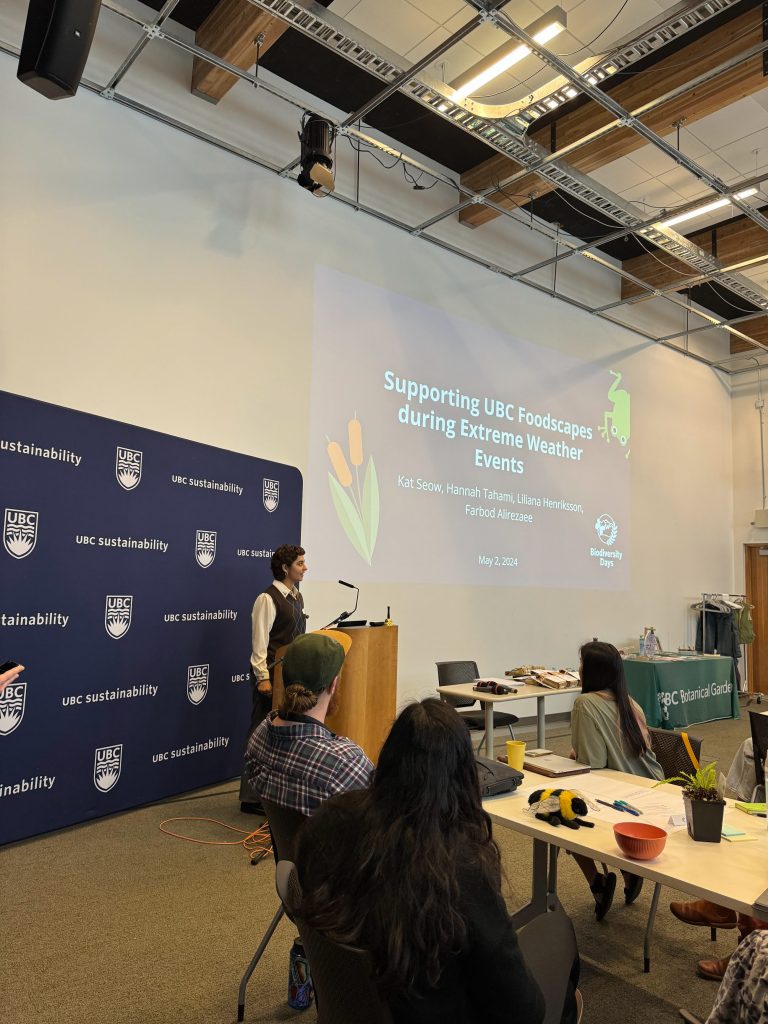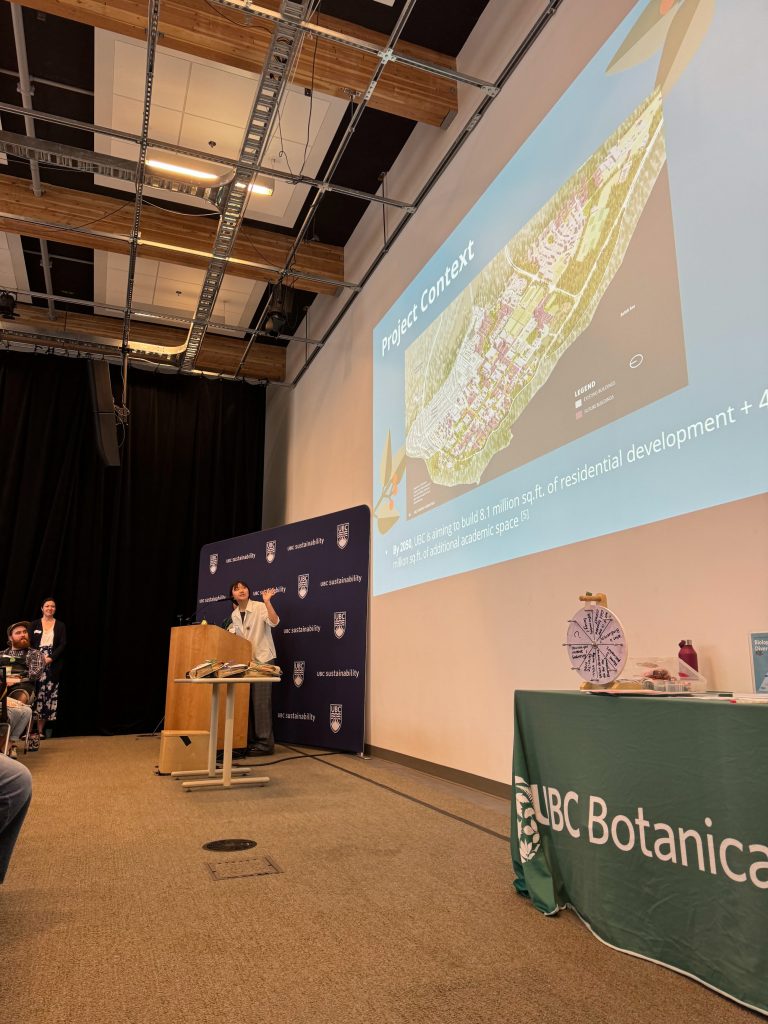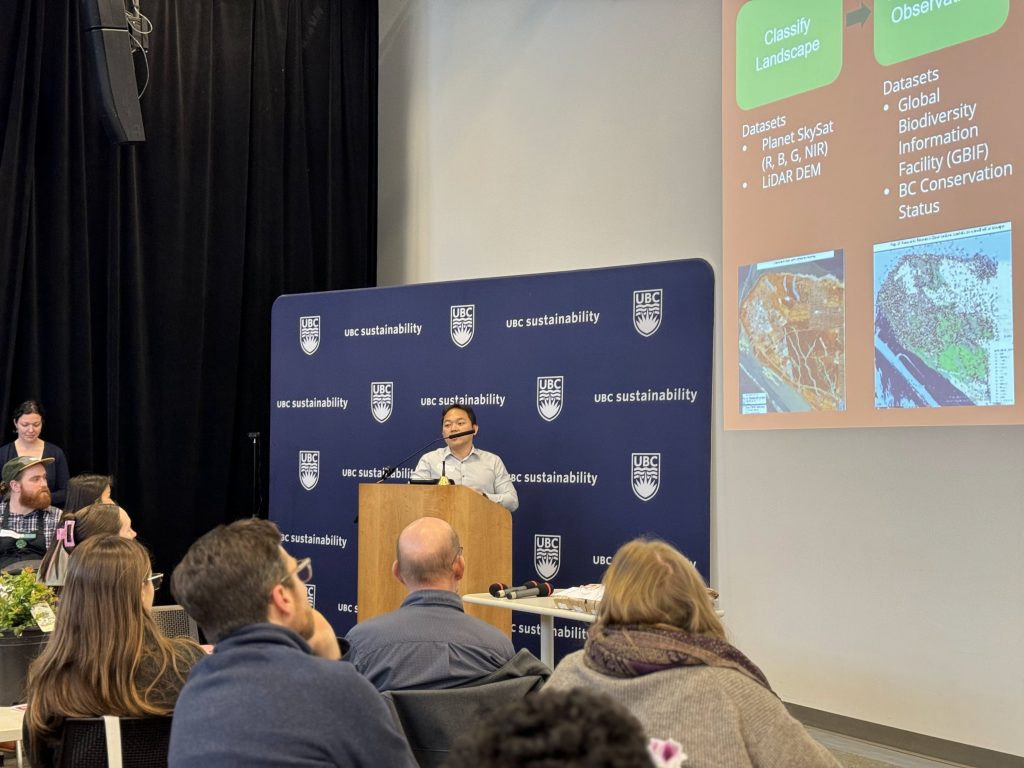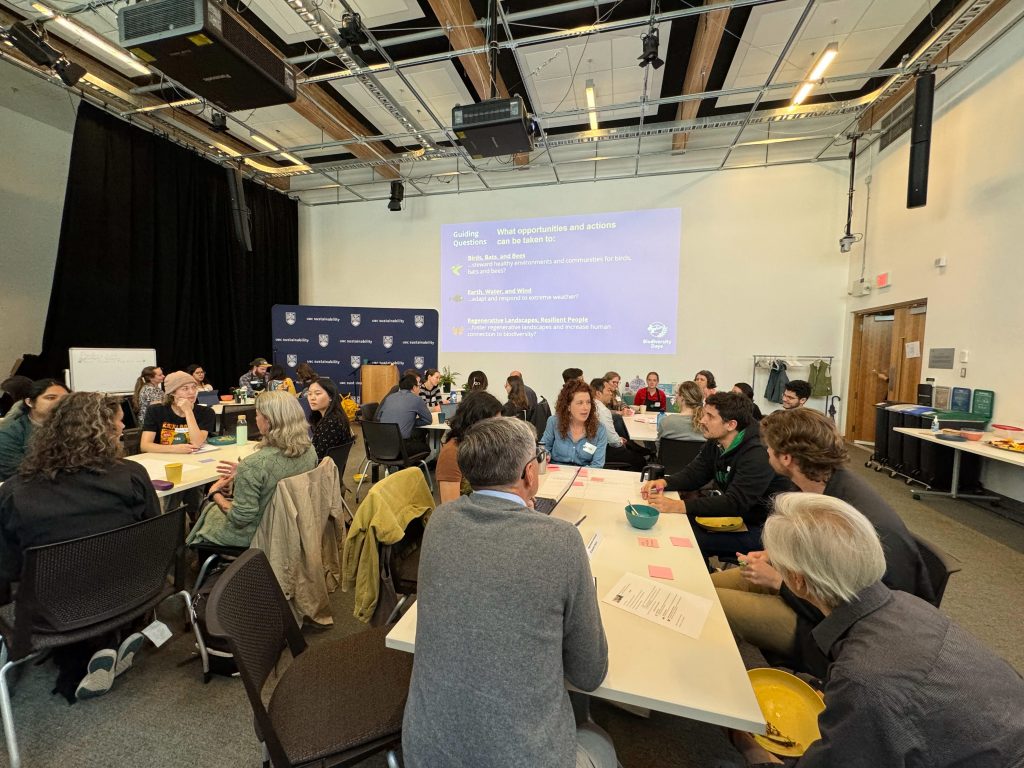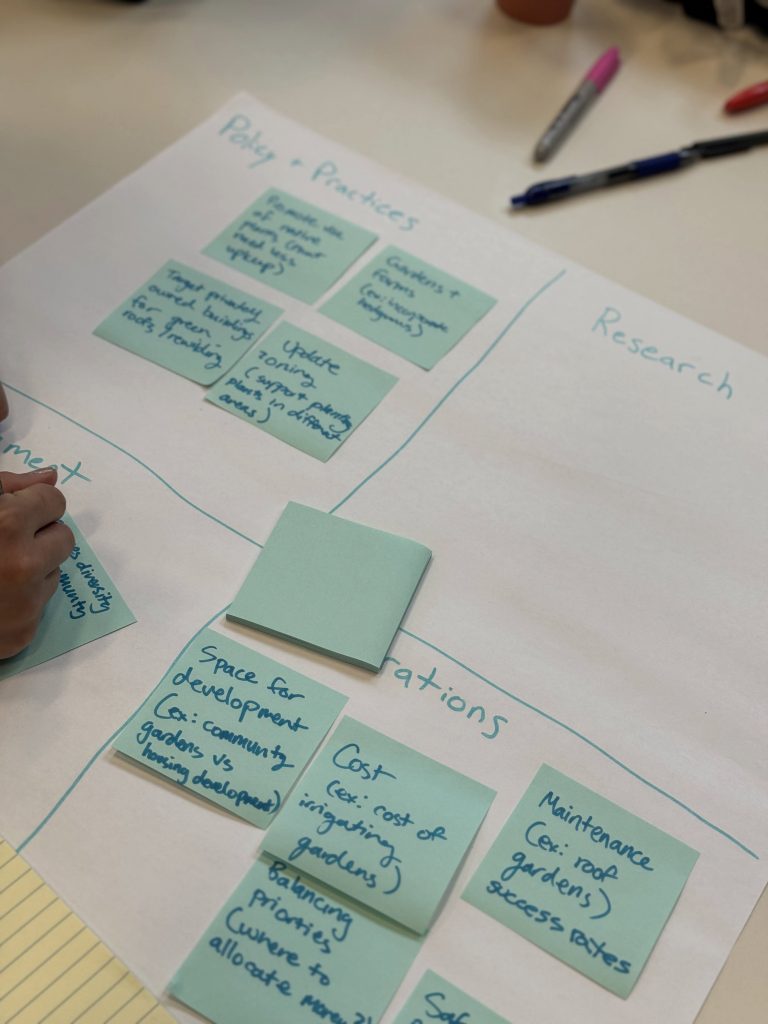Did you miss our Biodiversity Days Bird Walk event on May 5th? No worries! My name is Christine, and I’m the student Urban Biodiversity Coordinator with UBC SEEDS Sustainability. I’m here to share a recap of the walk and what we learned from expert birders Bev and Bill Ramey.
The Bird Walk was hosted as part of our month-long Biodiversity Days event, an annual series that aims to celebrate and uplift biodiversity. During this walk, we brought together community participants to learn about the diversity of birds at the UBC Botanical Garden and try their hand at birding.
On the morning of the 5th, we met in front of the garden to kick off the walk. Already, we were greeted with a sampling of the birds that are often seen in the Garden – including an American Robin (Turdus migratorius) and multiple Bald Eagles (Haliaeetus leucocephalus). The Botanical Garden is home to many resident bird species, which are species that live in the Garden year-round (including bald eagles and their nests!). UBC is also located along a migratory bird path, meaning that we see an increased diversity of bird species during the spring and fall. Check out this bird biodiversity brochure to learn about the birds that are most commonly spotted in the Garden.
After a stroll through the garden, stopping to listen to and identify various bird species, we stopped by the Garden Pavillion. The windows of the Garden Pavillion feature whimsical designs of birds, plants, and more – which have the added benefit of helping to prevent bird window crashes because the design makes the window more visible to birds, and less reflective of greenery. Here, I discussed with participants about how they could make their own windows at home more bird friendly – for example, by using bird friendly window stickers, or by drawing on windows with oil-based paint markers.
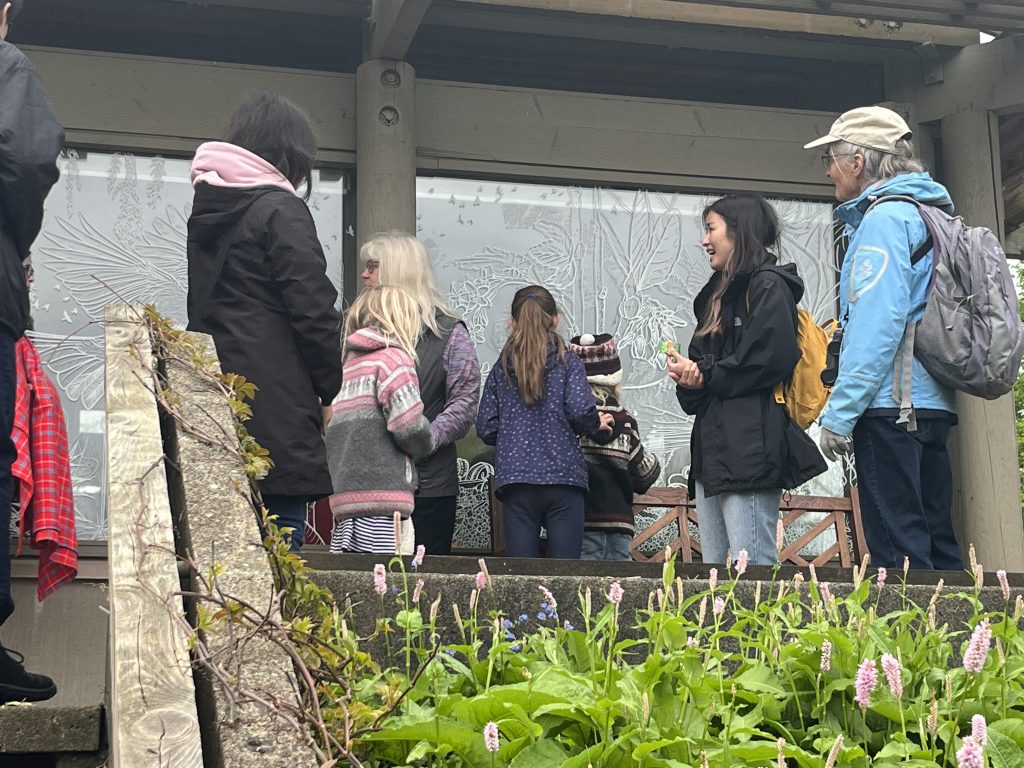
As we continued through the garden, we were treated to close-up views of birds through the scope that was brought by Bev and Bill. This scope allowed us to see birds in high definition from a distance – including an Anna’s hummingbird (Calypte anna) and a Rufous hummingbird (Selasphorus rufus).
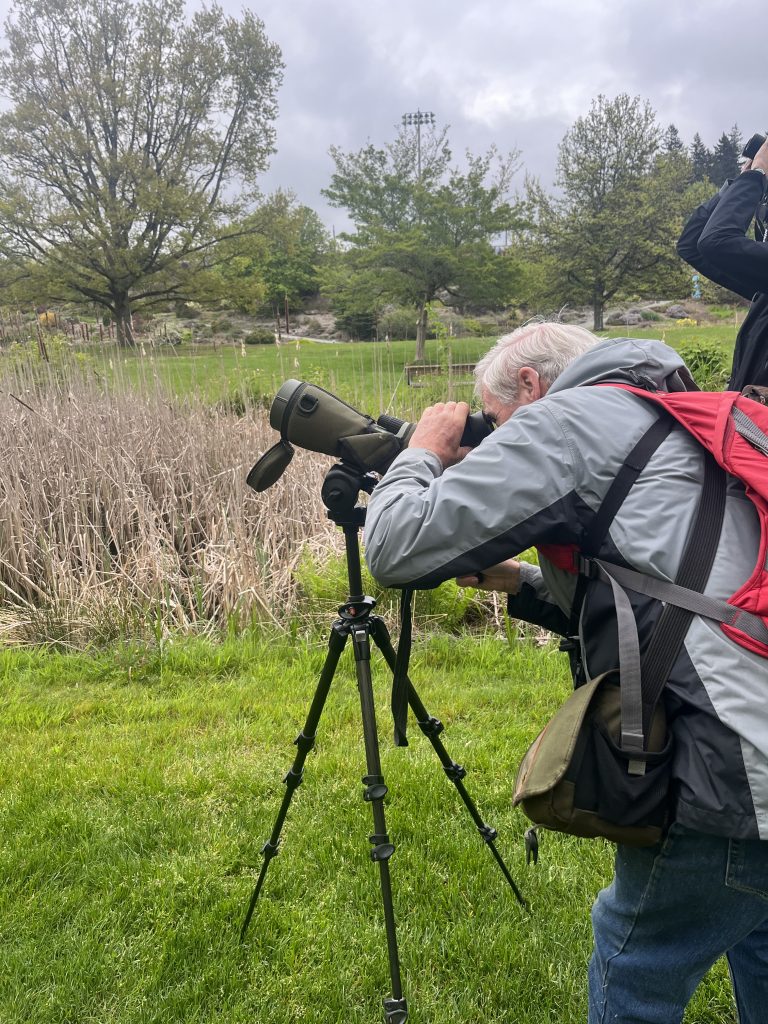
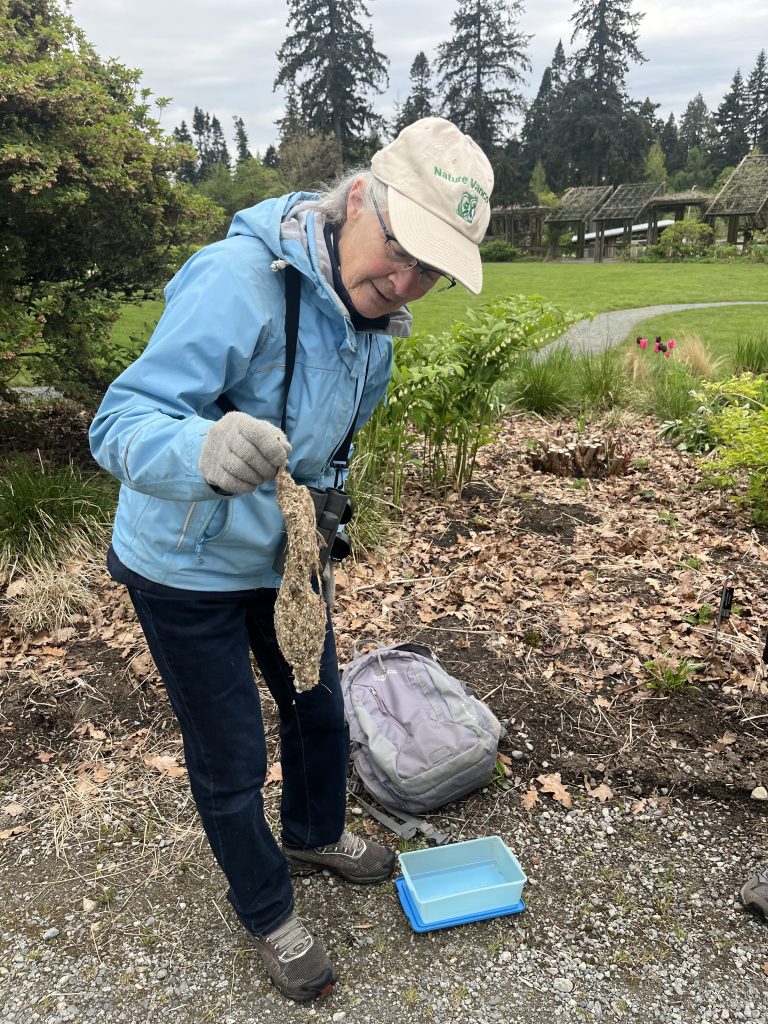
Bev and Bill also brought along an old bushtit (Psaltriparus minimus) nest. These tiny birds build sock-like nests out of lichen and spiderwebs, ensuring that they are strong and stretchy because they stretch as the eggs are laid inside and the chicks hatch and grow larger. These nests only last for one breeding season. There is a breeding pair in the Garden right now – look out for their nest near the Cactus House next time you visit.
Bev and Bill also introduced the Merlin Bird ID app to the group. Merlin Bird ID is a smartphone app developed by the Cornell Lab of Ornithology. It can suggest identifications for birds based on their song or based on a photo. It is free to use, and we highly recommend any interested birders to check it out here.
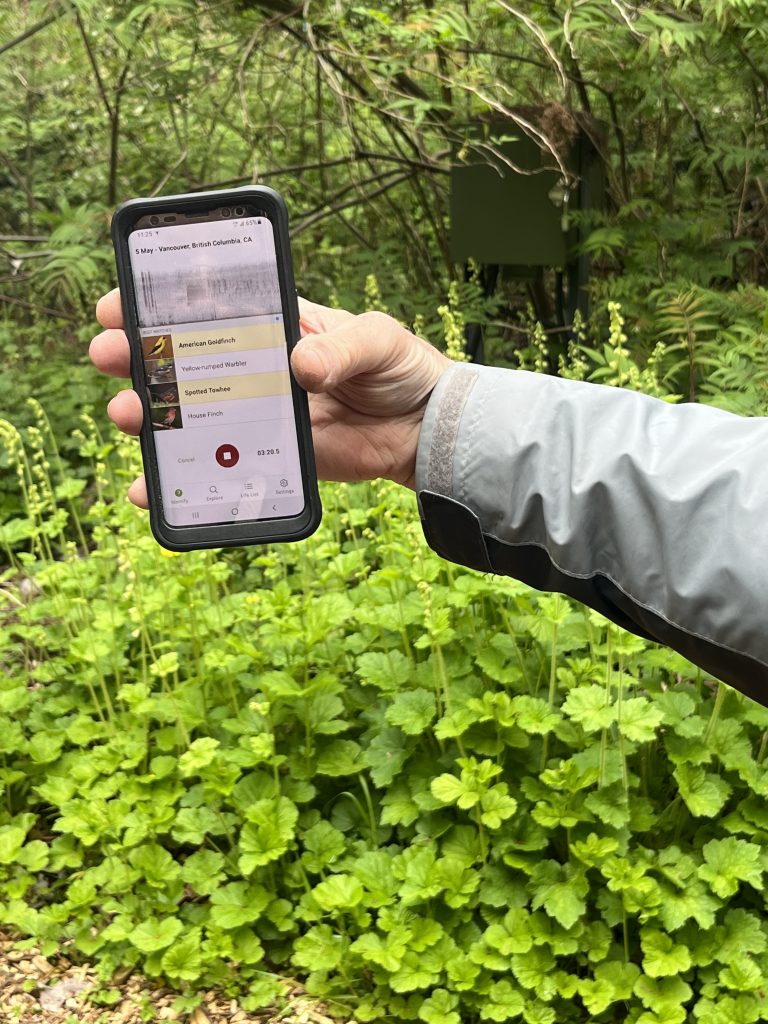
There are still more biodiversity-themed events planned for the rest of the month, as part of Biodiversity Days. Check them out here!
In addition, Friday, May 10th to Sunday, May 26th marks the Greater Vancouver Bird Celebration, where you can find additional bird conservation events for both beginner and advanced birders.
We hope to see you at our next event!
